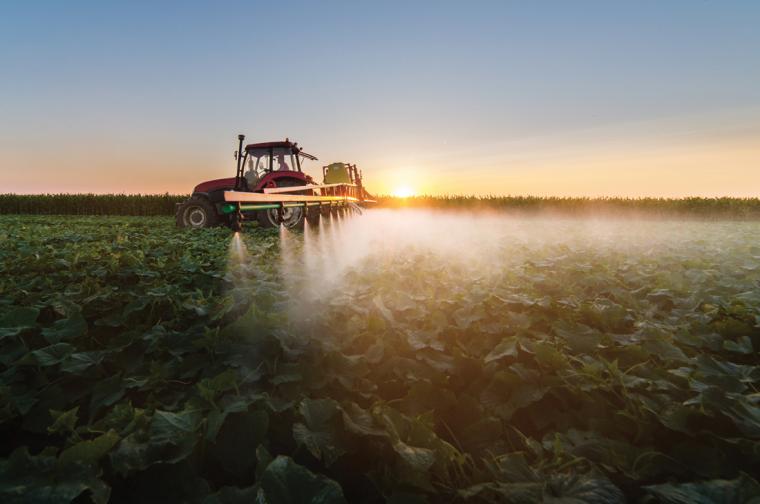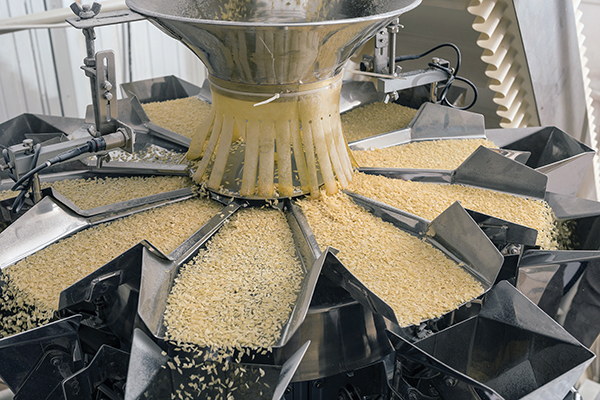
Technology eventually comes to change all industries, and the food industry is no exception. Overall, the global food market is projected to reach $8.7 trillion in revenue in 2022 with an expectation that it will grow at a compound annual growth rate (CAGR) of 4.8 percent to 2027, according to Statista. But some segments of the food market are expected to grow much faster.
In recent years, an entirely new segment has been created: food tech. Within food tech, one of the fastest developing segments is alternative proteins. This segment is dominated by innovative start-ups and scale ups active in areas such as alternative dairy, meat and egg products. Despite its start-up character, the alternative protein segment has already reached significant size and is projected to grow over 12 percent per year to reach $36.6 billion by 2029. A key common theme of these companies is a strong focus on sustainability in the mix with more traditional business drivers such as growth and profit.
The C-level management of these food tech companies are typically still the founders of the organizations. Entrepreneurs who developed the initial technology are continuing to build the organization around them and develop the market.
Examples of these food-tech startups include:
• Alternative dairy producers like Oatly, Vitasoy, Remilk, Sunopta and Else Nutrition
• Alternative meat producers like Redefinemeat, Beyond Meat, Maple Leaf Foods and Amy’s Kitchen
• Alternative egg product producers like Eat Just, Evo Foods, Zero Egg and Oggs.
These entrepreneurs are putting a significant challenge on their operations leaders: to rapidly build manufacturing capacity and an overall supply chain to be able to fulfill market demand and gain a position in the market as a basis for further future growth.
Based on our experience in working with many of these companies, BCI Global has defined four strategic directions for innovative food tech companies with clear international ambitions to establish the right manufacturing and supply chain footprint for the future. They are as follows:
• Differentiating between short-term capacity development and longer-term strategy
• Creating the right ecosystem
• Selecting the optimal location for new operations
• Footprint risk management.
Differentiating Between Short-Term Capacity Development and Longer-term Strategy

Markets are more impatient than they were once upon a time. Once a promising new product is developed, the market (consumers as well as investors) requires the product to be commercially available as soon as possible.
For a new company with no infrastructure in place yet, the step to develop large-scale manufacturing capacity is an enormous one. Not only does it require significant amounts of investment, but also building up the organization to manage the design, development and scaling up of the plant. This process takes time, particularly once factoring in the extensive regulatory and validation processes that exist in the food industries.
In order to still meet the requirements of investors and early customers, a good strategy for a company can be to partner with other manufacturers who utilize the same kind of production technology and who have already established production capacity. Running a pilot with such a partner, arranging regulatory approvals and ramping up production is a much shorter process and can therefore significantly speed up the time to first commercial sales. This accelerated process will make the CFO happy, as the revenue generated with these first sales can be used to finance the development of larger owned manufacturing capabilities.
So, for the short term, partnering with contract manufacturers is a strategy which is utilized by many fast-growing food tech companies while simultaneously building the company’s first own manufacturing plant or plants.
Even for the longer term, a mix of large-scale own manufacturing and contract manufacturing can be a good strategy. BCI has seen many companies experiencing success with this implementation. A key driver for such a strategy can be to use the outsourced capacity as a flexible base to accommodate peaks and drops in demand. Another driver can be an investment and/or commercial one: investing significantly in own assets in the largest initial market (e.g., North America or Europe) while still serving smaller but promising markets for the future (e.g., Asia and Latin America) through outsourced partners in those geographies.
Creating the Right Ecosystem
The traditional food production ecosystems may not be right for alternative food producers. In many cases, food tech companies require different raw materials/inputs for their production processes. Some of them require significant chemicals such as ethanol or methanol, others require a lot of very specific agricultural feeds like sugar or soya in combination with biological and/or chemical materials.
Besides these materials, many food tech companies are also very energy-intensive due to the nature of their production process. Some, for example, might require a lot more heat than traditional food producers. For companies with these requirements, it is key to be located in the right ecosystem with suppliers of the required materials as close by as possible, even to the level of supplying feedstocks through pipelines by neighboring companies at the same business park. For companies that value sustainability, there is a desire to use as much green energy as possible, so in the location selection processes there is a lot of emphasis on the availability of green energy, now and projected for the future.
Selecting the Optimal Location for New Operations

The importance of balancing between short term and longer term, own and outsourced operations as well as the local ecosystem around the manufacturing plants is driving companies to do more detailed, fact-based location analyses before making decisions on where to locate the first manufacturing facility.
As mentioned before, the availability of the right ecosystem is an important location factor. This includes having the right suppliers close by but also having an established knowledge base and labor pool in the region from which the key personnel for the critical start-up and ramp-up phases for the new manufacturing plant can be sourced. We have recently seen significant manufacturing investments of food tech companies into locations such as Denmark and The Netherlands in Europe. Some of these locations have not been hot spots for manufacturing for a long time, but for this kind of new activity, these areas are providing the right ecosystems. In the U.S., several investments into California are illustrating this shift, as well.
Start-up companies are known for taking more risks than large, developed companies. However, in their location selection for their very first plant, this is not the case. Many of these startups are choosing a safer solution, locating where they see the lowest risk of failure. Failure is not an option for the very first plant. This means that being confident about finding the right initial management staff and engineers is key, as is the availability of materials from nearby suppliers through excellent logistics connections. Additionally, these companies benefit from support from local authorities for things like direct financial incentives as well as soft-landing support: recruitment programs, positive communication, employer branding and facilitation of entry into local networks and ecosystems.
Finally, it’s critical to consider local market potential and product acceptance. Companies benefit from landing in a region where their new products and/or new production technologies (e.g., biological, GMO, chemical, 3D printing) are highly welcome and supported as opposed to regions that provide a good basic manufacturing environment but where the context from a market and regulatory perspective is highly complex and uncertain.
Footprint Risk Management
Global uncertainty, both geopolitical and economic, as well as material and energy availability are not only impacting large and established companies. For food tech start-ups, they play an important role in strategic development.
Similar to other industries, fast-growing food tech companies are requiring their manufacturing and supply chain leaders to take risk into account in their operations development, optimization and strategy development initiatives not as a sensitivity analysis after the analysis has been concluded, but as one of the key strategic drivers. In order to deploy effective risk management and to take risk into account in an integral way when modelling manufacturing footprint scenarios, companies first must attain a good view of what risks are relevant and then determine how to balance those risks against the typical drivers such as costs, lead times, etc.
Taking risks into account in a detailed way when deciding on where to expand capacity and where to locate potential new production facilities is particularly important for food tech companies because of the high investments and long lead times for these projects. And, as mentioned before, failure is not an option for a company investing in and implement its very first large-scale manufacturing operation. Good decisions provide a competitive advantage over a long period, and a wrong location decision will translate to a long-term competitive disadvantage or for this type of company. T&ID
